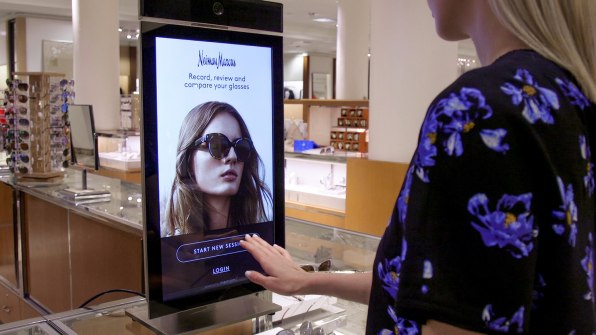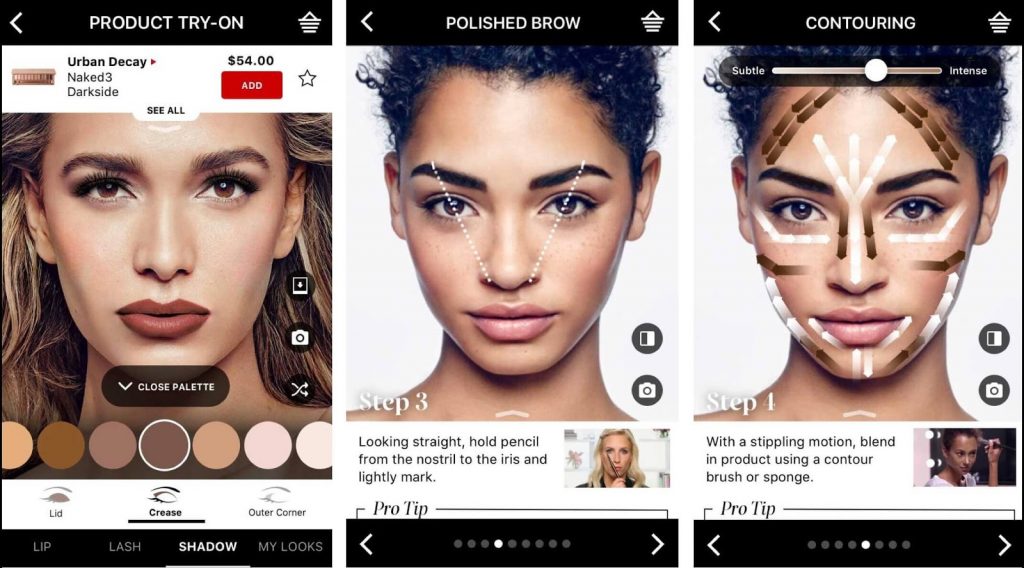The Top 8 Tech Trends Driving the Future of Retail
The continual evolution and improvement of technology have a significant influence on business across the globe on both sides of the checkout counter. The ease with which we can connect on essentially any device at any time is unprecedented. Retail has certainly been one of the industries most affected by this progress. Nearly everyone shops at retail stores and this definition now include both in-person visits and online storefronts, which means all these technological advancements have an effect on our habits as consumers. But some technologies have had a greater impact than others.
What are the biggest tech trends in retail that you should keep on your radar? Here’s a list of our top eight:
- Voice
- Personalization & AI
- Online & in-store integration
- Smart mirrors
- Social media
- Chatbots
- QR codes
- Augmented reality
The rise of smart speakers, which now inhabit over 20 percent of WiFi-connected homes, have made consumers increasingly comfortable interacting with the internet via voice. Now, you can simply ask your Amazon Alexa to “order more paper towels,” and boom — two days later there are paper towels on your doorstep. Many consumers are still adjusting to, or are just discovering these voice-activated features and capabilities. However, no matter how you slice it, the increased usage of voice is inevitably going to transform the shopping experience.
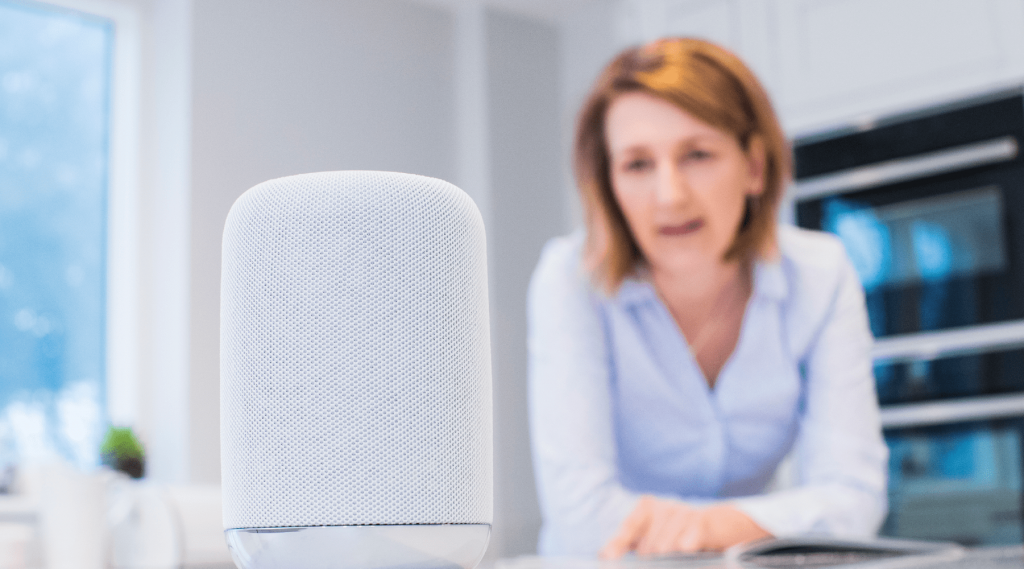
Voice-activated technology plays various roles in the virtual shopping experience beyond just making purchases via smart speakers. For example, over the past two years, the amount of voice searches that begin with “where can I buy” has risen by 85 percent. Consumers aren’t just using their voices to check out online; they’re also using it to find the retail store they’re looking for in the first place. The question for retailers now becomes, “How can we get Alexa to direct the consumer to our store instead of our competitor’s?” Retailers will have to adapt their SEO strategies for voice-activated search to satisfy their customers’ demand.
To keep up with top industry retailers, personalizing the customer experience with the use of artificial intelligence (AI) is a must. Oracle CEO Mark Hurd claimed, earlier this year, that “during the next two years, artificial intelligence and the ability to run autonomous software and systems will dramatically reshape how businesses think about technology.”
But AI and personalization functions not only need to be implemented — they need to be implemented the right way. Consumers now demand more from their shopping experience than ever before. From the product recommendations you get on Amazon to the grocery store coupons you receive to the advertisements in your mailbox, all of these things are tailored to you as an individual consumer. In fact, a dad in Minnesota discovered his teenage daughter was pregnant based on coupons the family received in the mail — and that was more than five years ago.

Personalization is prominent in the digital world. Amazon’s product recommendations are generated from your previous purchases and browsing history, among hundreds of other data points.
Similarly, Netflix uses data from your profile’s viewing history to recommend movies or shows that are more likely to capture your interest. They even go so far as to customize the artwork you see to appeal to personal preferences. According to a post from The Netflix Tech Blog, “_The artwork may highlight an actor that you recognize, capture an exciting moment like a car chase, or contain a dramatic scene that conveys the essence of a movie or TV show. If we present that perfect image on your homepage (and as they say: an image is worth a thousand words), then maybe, just maybe, you will give it a try._”
The current technological revolution pushed retailers to adapt their customer experience to accommodate online shopping. At this point, most retailers have adapted to allow people to buy their products online. The next rung on the ladder, which retailers are under great pressure to reach, is integrating their online and in-store channels to provide a seamless experience for consumers.
The meshing of online and in-store interactions has come to fruition in several ways. At Macy’s, consumers can now check out with an app right from their phone while they’re in the store. As they peruse the merchandise and decide what they want, they can use the Macy’s app on their phone to simply scan the items into their cart. As consumers leave the store, an associate validates their purchase, removes any security tags and bags their items. Macy’s CEO Jeff Gennette said of the app, “_We are excited to expand our launch of Mobile Checkout powered by the Macy’s app, providing our customers with the opportunity to self-serve and speed their transactions with us in-store._”
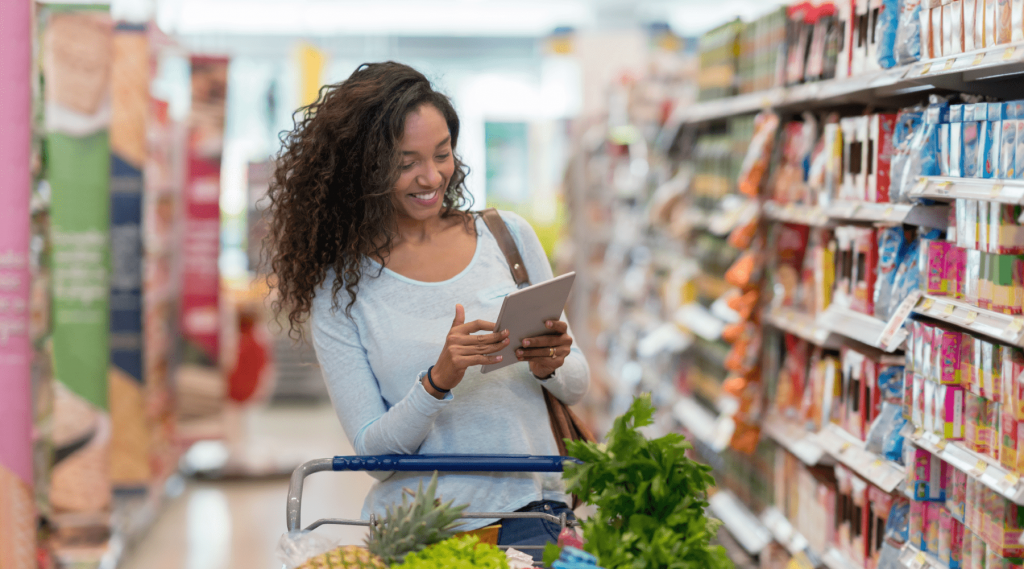
Employers also benefit from online and in-store integration with technology that allows them to manage their business and employees from anywhere. Employee management software is an increasingly popular technology that many retail stores are implementing to cut down on scheduling time and labor costs.
 to see how much money you could be saving by implementing a workforce management tool.
to see how much money you could be saving by implementing a workforce management tool.
Automating retail operations workforce can improve the retail experience and allow for employers to focus on other aspects of their business. Deputy’s leading workforce management software is used across the globe by both large and small companies. To learn more, schedule a time to chat with a rep and see the product in action:
One of the coolest technological advancements pertaining to the in-store retail experience is the smart mirror. Smart mirrors have dramatically improved the customer experience for fashion retailers. The smart mirror has essentially brought the online shopping experience right into the dressing room of a physical store. Retail products in stores, tagged with RFID technology, allow the consumer to see which products are in stock, including the different sizes and styles of the given items.
The smart mirror can provide all kinds of beneficial data to the store itself, in addition to providing a better experience for consumers. According to trend forecaster Petah Marian, “Understanding which products are being tried on and not bought, what’s being sized up or down or being styled together, is the physical equivalent to knowing what was put into an online shopper’s cart and not bought.”
With this data, stores can adjust their operations, and their marketing or other strategies accordingly, to improve the efficiency of their business and increase conversions.
Smart mirrors also allow retailers to easily capture contact information from their customers such as email addresses and phone numbers. Consumers are more than willing to give up their email addresses when given the opportunity to interact and shop with a smart mirror. Retailers can couple the gathering of consumers’ contact information with the experience-based data they collect via the smart mirror to implement intelligent follow-up strategies and improve conversion rates.
The retail landscape has also undergone significant changes as a result of social media. Instagram’s recently-introduced shoppable posts, which allow Instagram users to shop their favorite influencers’ wardrobes right from their posts, present one major way for brands to capitalize that might have been unimaginable a decade ago. To utilize Instagram shoppable posts, retailers only need to set up their Facebook Shop and sync it with their Instagram account. Then retailers will be able to tag products from their Facebook Shop in their Instagram posts, allowing viewers to go from the post to the product page in a single click.
Many retailers that have invested resources into this relatively new sales channel are doing quite well, which is evident in the few statistics available on Instagram-related shopping. 75 percent of Instagram users claim to have taken action after seeing a business post on the platform. Considering there are 500 million active daily users on the platform, retailers have huge opportunities to reach their biggest fans and increase conversions through the same efforts. For example, by implementing shoppable posts into their Instagram marketing strategy, women’s fashion company Natori received a 1416 percent boost in referral traffic to its website from Instagram.
Chatbots offer retailers another technology that’s proving to be a versatile and effective way to reach their customers. Chatbots help retailers all over the world take their customer service to the next level. By leveraging the power of automation and AI, retailers can instantly answer common questions from their customers to boost the quality of their shopping experience. Beyond answering simple questions, advanced chatbots can also provide intelligent insights to individual customers.
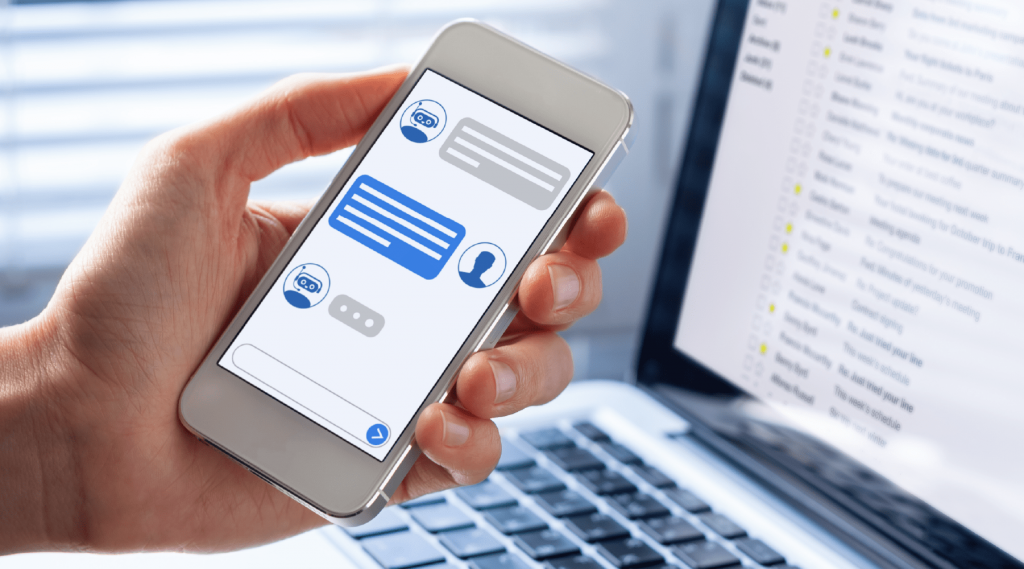
For example, Flawless by Gabrielle Union uses a Facebook Messenger chatbot to ask their customers a string of questions. Based on the customer’s answers, the chatbot makes product recommendations based on their specific needs. Another retailer, Narvar, uses their Facebook Messenger chatbot to provide shipping status information to customers about their purchases. With chatbots, retailers can get their consumers the info they are looking for almost instantly, which leads to better customer experience, stronger brand loyalties, and ultimately more repeat purchases.
The resurrection of QR codes holds big potential for retailers and marketers. Organizations started pushing QR codes in 2010, but they never really took off. This was partially due to the fact that you needed an application dedicated to reading them. However, Apple’s iOS 11 includes the ability to read QR codes with the iPhone’s native camera app, eliminating the need for an extra app.
Now that QR codes are easier for consumers to access, retailers are taking advantage of this trend and fueling the QR comeback. Research also supports the second coming of the QR code. A new study from Juniper estimates that more than five billion QR code coupons will be redeemed in 2022, a significant increase over the estimated 1.3 billion redeemed in 2017.
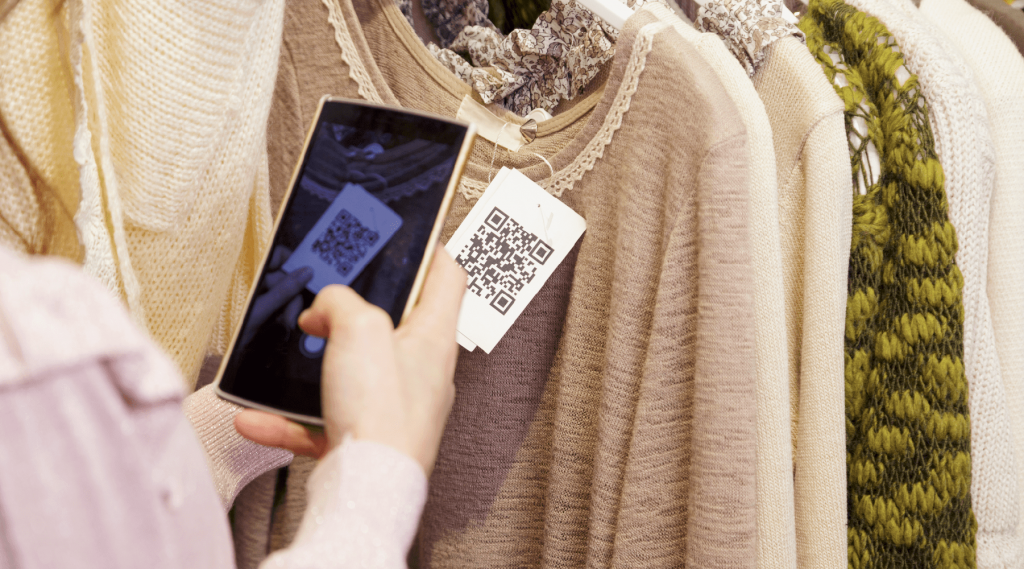
Retail giant Walmart didn’t waste any time integrating QR code technology into their mobile app. The new Walmart Pay functionality allows consumers to add a preferred payment method to their Walmart account. Shoppers can then use the Walmart Pay feature to check out by simply scanning a QR code at the register. The Walmart app not only provides a convenient solution for shoppers, but it also allows them to easily access coupons and promotions as well, saving them time and money. Much like smart mirrors, the app also greatly enhances Walmart’s ability to collect customer contact information.
Fashion retailer Zara uses QR codes on items in their store to provide consumers with manufacturing information, size and color options and other product recommendations. Shoppers can access all this information in stores, eliminating the need to do research about products once they’ve gone home. With QR codes, Zara gives consumers access to more in-store options and information than ever before to make the shopping experience truly omnichannel.
No trend-related article would be complete without mentioning some form of reality distortion.
Nobody is taking advantage of augmented reality in the makeup and beauty space more than Sephora. Sephora started experimenting with their Innovation Lab back in 2015, which has led to monumental technological advancements in their industry. Sephora’s VP of Omni retail, Mary Beth Laughton, says,
“We are very focused on our customer, and we know that her life is increasingly reliant on digital. So we know to be successful as a retailer, we’ve got to be where our clients are, and give her tools and experiences that meet her needs.”
That’s exactly what Sephora’s done over the past few years. For example, the Sephora Virtual Artist, which is part of their mobile app, leverages augmented reality and artificial intelligence to let consumers virtually try on cosmetic products before purchasing. Previously, online shoppers wouldn’t know what these products looked like on their faces before purchasing, which led to customer dissatisfaction with their purchases. With the Virtual Artist, consumers can get a much better idea of what the product will look like when they put it on, which means more of them will be satisfied. Laughton further explains that “Sephora Virtual Artist is a really good example of where there was a real customer need.” According to her, “It can be overwhelming coming into our stores or shopping online, but this makes it easy to help you find your favorite shade and save you time.”
The Future is Here
As technology continues to develop, more emerging trends will impact the landscape of the retail market. Consumers will always demand more efficiency and accessibility from retailers, who, faced with the pressure of demand in the marketplace, must continually innovate and deliver improved customer experiences. As this cycle continues, new trends will inevitably catch on and set an even higher bar for retailers, further driving innovation.
What do you think will be the next big trend in retail? Comment below!
Are you a retail owner? Stop wasting time on manual tasks. Retail employee management software can save your business time, money, and even headaches by automating business operations. Try Deputy for free by signing up for a free 30-day trial below and get back to loving your business again:

